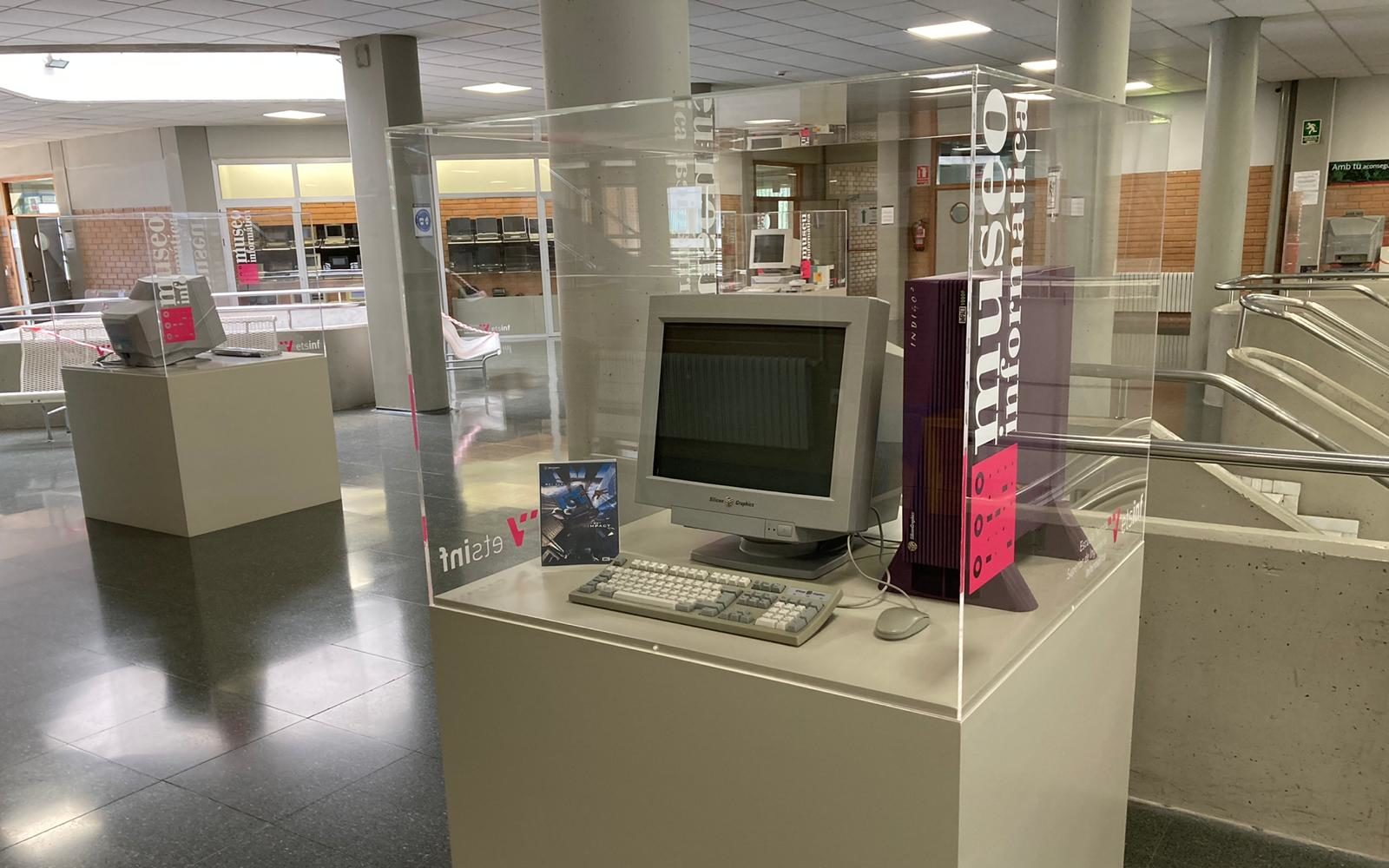

By the early 80s of the XX century, there were three types of computers on the market. First, mainframes and minicomputers of large and medium-sized firms, with peripherals distributed in different cabinets without graphic resources and with terminals connected on-line through rudimentary webs designed for teletype devices. Second, domestic microcomputers based on 8-bit microprocessors. These small computers could be connected to a TV set, they had limited multimedia capacities and represented a relatively inexpensive alternative, which gave rise to an emerging community interested in computing and programming in BASIC language and videogames. And lastly, personal computers, which emerged at the beginning of this decade as the evolution of large mainframe terminals. These computers incorporated 8 to 16-bit microprocessors and a uniprocessor operating system without a multiuser or memory protection. The control of the growing catalogue of perípherals fell on the microprocessor and, despite its poor computational power, these computers became de facto the new management tool of small offices.
At the end of the 80s and, especially during the 90s, desktop computers based on powerful 32 to 64-bit CPUs emerged. They included arithmetic units of very high computation precision, large main memory capacity arranged in standardized modules, high-performance graphic interfaces, huge monitors exceeding 20 inches, and a multiuser and multiprocess operating system based on UNIX, capable of managing the physical resources of the computer efficiently. They also had great connectivity via Ethernet, which enables team work and the sharing of data and programmes. These computers were known as “workstations” and were widely used in scientific research centres, universities, engineering offices, and in the first digital production centres.
The main American companies manufacturing Workstations were Apollo, SUN (Standford University Network), SGI (Silicon Graphics Inc.), HP (Hewlett Packard) and DEC (Digital Equipment Company). HP and DEC had built mainframe and minicomputers before, while Apollo (purchased afterwards by HP), SUN Standford University Network and SGI Silicon Graphics Inc were newly created companies.
As regards computer architecture, the limits between a Workstation and a personal computer are blurry, depending on performance and the operating system. For example, computers such as the Commodore Amiga, the Atari ST or the Apple Macintosh used the same Motorola microprocessors and advanced graphic terminals but they differ from Workstations in that their operating system was not based on UNIX. However, differences increased as time went by.
For instance, CPU architectures for Workstations took as an example mainframe architectures, but aiming at reducing the size of different printed circuit boards to a single integrated circuit. However, the approach which crystallized towards the end of the 1980s entailed a profound revision of the relation between CPU and memory. So, processors and memory system designs were linked, thus adding a virtual memory, specific instructions for memory access and a reduced set of machine instructions, designed to their execution in a reduced number of clock cycles. This renovation in the design of processors, arisen from two projects at Stanford and Berkley universities, led to the so called RISC architecture. The “RISC revolution” caused processors three times faster than other contemporaries with the same number of transístors.
At the beginning of the XXI century, a personal mainstream computer with a Linux operating system offered similar performance to a workstation, but at a fraction of its cost. This caused the market of workstations and their processors to start vanishing. In spite of the fact that this type of computer disappeared around 2010, an evolution of the RISC architecture, known as ARM, is the basis of the processors of portable devices such as tablets or smartphones, and they are even used in supercomputers like the Japanese Fugaku from the RIKEN Center for Computational Science, which is considered the most rapid of 2020, according to the ranking TOP500.
